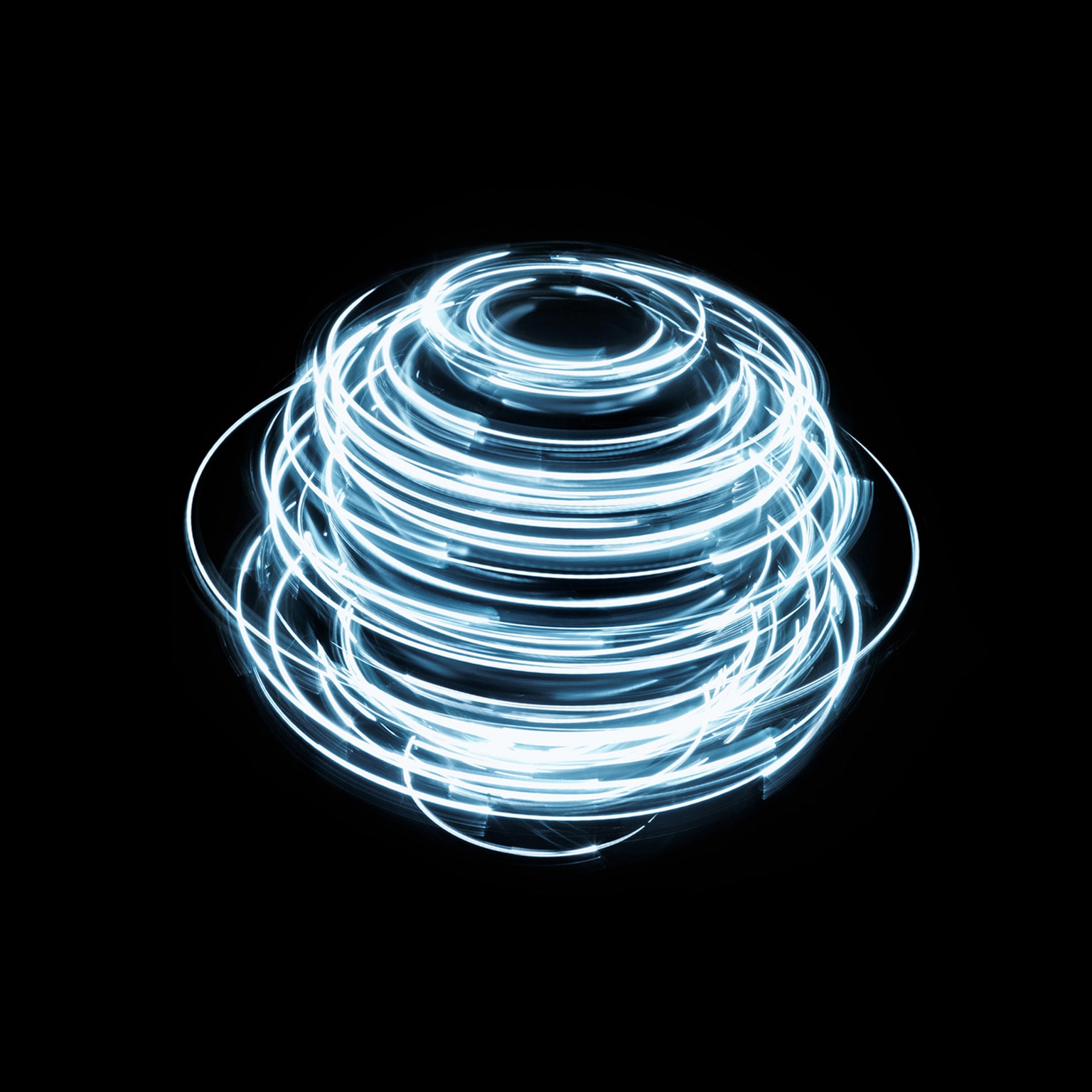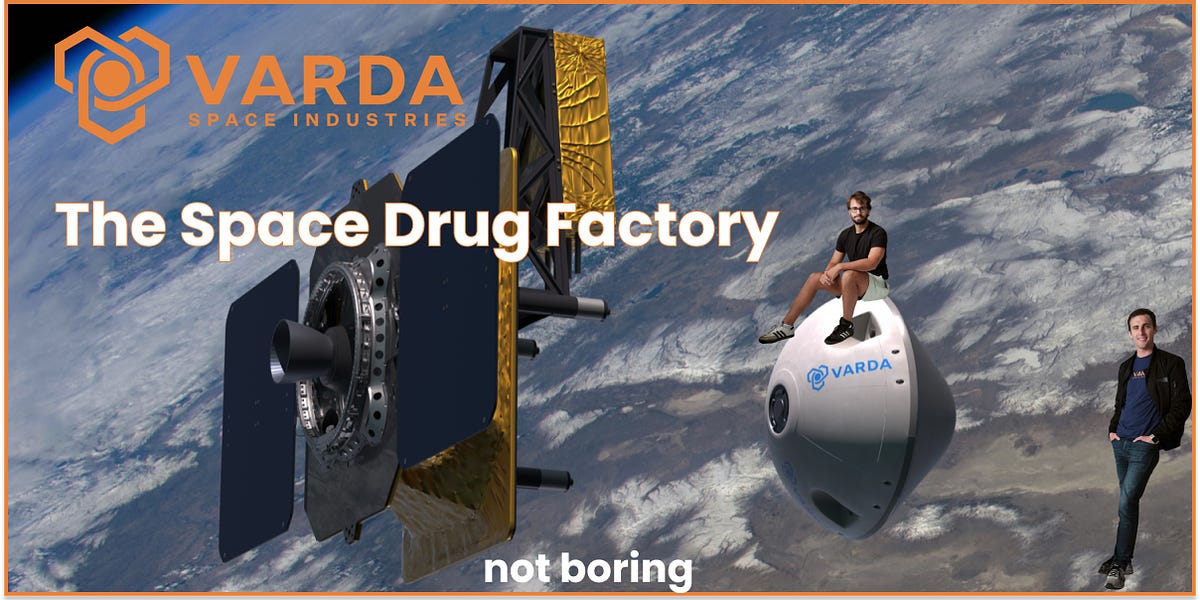
The process should be a going concern. It doesn't need to be profit-making by 2030, but the company must be routinuely operating their in-orbit factories/manufacturing facilities.
As a reference, one can look at the plans of Space Forge, but I will try to take an expansive view of what qualifies.
A clairification comment:
"So it looks like I'll need to make some sort of ruling on Varda. The key word is 'routine'. What I'd always been imagining was a successful repeat of a normal flight mode, rather than a test flight or a proof-of-concept flight. It's easy to say that the first flight is automatically a test (and does not count towards the two flights necessary for a 'repeat'). What's a bit trickier is subsequent flights. If Varda themselves describe the/a second flight as still a test, that's easy enough (to discount it). If they don't, then we'll have to consider the evidence of whether they are actually selling the 'products' they are making.
Obviously, the same criteria will be applied to other companies (at least those using this kind of model)."
Update 2025-03-16 (PST) (AI summary of creator comment): Not a Test: The qualifying flight must not be a test flight.
Repeat Flight: There must be a repeat flight that is not labeled or treated as a test (the first flight is considered a test and does not count).
Product Manufacturing: The company must actually manufacture products for sale, not just conduct test or proof-of-concept operations.
@traders this is an old market that I traded in early on despite being the creator. Today I would not on trade on something like this which requires judgement on my part.
I will sell my shares in approximately 24 hours wherever the market is at that point and will not trade after that.
@OP this ought to resolve YES.
Varda’s 120-kilogram W-2 capsule carried a spectrometer built by the United States Air Force Research Laboratory and employed a heatshield developed in collaboration with NASA’s Ames Research Center. The capsule also carried Varda’s expanded pharmaceutical reactor which enables the production of life-saving medicine in space.
It needs to be:
not a test
a repeat of another flight which was not a test
actually manufacturing products for sale
@JoshuaWilkes this is the second flight of Varda which actually manufactured pharmaceuticals.
a repeat of another flight which was not a test
This is new! Previously you had stated:
If Varda themselves describe the/a second flight as still a test, that's easy enough (to discount it). If they don't, then we'll have to consider the evidence of whether they are actually selling the 'products' they are making.
They are not describing the second test flight as a test in the linked press release.
@PeterBuyukliev
EL SEGUNDO, Calif., Feb. 28, 2025 /PRNewswire/ -- Varda Space Industries, Inc., a microgravity-enabled life sciences company, today announced the successful landing of its second reentry capsule, W-2, and the completion of the company's second mission. At 6:32 AM Pacific Time today, W-2 touched down at the Koonibba Test Range after six weeks in orbit.
The W-2 capsule carried a spectrometer built by the Air Force Research Laboratory (AFRL) and employed a heatshield developed in collaboration with NASA's Ames Research Center in California's Silicon Valley. The capsule also carried internal research that will expand Varda's pharmaceutical processing capacity and capability.
"internal research that will expand Varda's pharmaceutical processing capacity and capability" sounds to me like demonstrating capability rather than actual manufacture for sale, The question requires
The company must actually manufacture products for sale, not just conduct test or proof-of-concept operations.
'Internal' sounds clearly more like "conduct test or proof-of-concept operations" and indicates it is not being sold to a third party.
I would perhaps suggest the question makes clear that
1. Not using the word test does not mean it wasn't a test.
2. 'products for sale' means physical thing(s) that are sold as objects. Something intangible like 'research' or 'transport' may be sellable as a 'product' but it wont count for this question unless it is a physical object
"What I'd always been imagining was a successful repeat of a normal flight mode, rather than a test flight or a proof-of-concept flight. It's easy to say that the first flight is automatically a test (and does not count towards the two flights necessary for a 'repeat'). "
The point made in that clarification many months ago was that you need two "not tests".
It looks like this second flight was still a test, but I'm happy to wait for more information that indicates otherwise. Either way, it wouldn't resolve YES (yet)
@JoshuaWilkes
If Varda or anyone else is basically just doing research but there is an extra success fee to be paid and this gets the product transferred from ownership by Varda to the research purchaser. That could be interpreted as sale of physical object manufactured in space.
This perhaps seems more like intangible research rather than product sale but it might argued to be sale of physical product manufactured in space. So how would you view this?
If you see it as product sale, I understand that one such event would not qualify, but if this happened for two different research purchasers for two different physical products would this count? i.e.
Does it have to be the same product on the two flights? (different purchasers presumably ok?) or maybe
The two flights have to be for the same purchaser but can be for different products? or
Different products and different purchasers are ok?
@ChristopherRandles I don't really understand what you are asking, but it seems like it is outside the spirit of the question.
Axiom Space seems to make good progress
Optical fibre is being produced on the ISS. These are still framed as tests/experiments of some kind, but very much seem to be working towards commercial production:
https://spacenews.com/flawless-photonics-kicking-glass/
Silicon Valley startup Flawless Photonics has produced more than 5 kilometers of ZBLAN on the International Space Station in two weeks.
It’s an achievement that eluded other companies that tried to produce the fluoride glass in microgravity.
For in-space manufacturing, Flawless Photonics’ accomplishment “is in a class by itself,” Lynn Harper, strategy lead for NASA ISS InSpace Production Applications, told SpaceNews. “They have successfully manufactured commercial lots of ZBLAN in space. They’ve done it repeatedly.”
[...]
Samples of ZBLAN produced by Flawless Photonics are scheduled to return to Earth on a SpaceX’s Commercial Resupply Services flight in April. At that time, NASA and an independent third party will study the quality and composition of the optical fibers produced on ISS.
Whatever those evaluations determine, Hernandez said, it’s important to note that Flawless Photonics already has demonstrated the ability to manufacture ZBLAN in microgravity.
“As someone that has done product manufacturing for a long time, I see a product that needs verification,” Hernandez said. “But I already see the manufacturing that has been working for over a year and a half on the ground and now has been demonstrated on station.”
@JoshuaWilkes - what's your idea on how such a production process would be evaluated in this market?
@cjames it should apply; the key words are 'routinely' and 'product', rather than 'once' and 'prototype'.
After reading this it seems there will be quite a lag between R&D and product commercialization based on my understanding of the current state of affairs. The time necessary to develop a marketable product in space plus that their is no tested infrastructure yet means I am betting NO.
@JoshuaWilkes Somehow the comments in that article devolved into about the Ukraine war, but there was one good comment about it being a solution in search of a problem.
I think continued operation of a single facility should count as "routine". Should not be a one-off manufacturing run, obviously, but I don't think "routine" should require multiple launches. If Varda is selling products produced continuously over an extended time period, I would argue that should count.
@chrisjbillington oh, I agree. If a company sends up a single station that is periodically sending down its product (and presumably also being resupplied), that would count. However this current Varda mission is only capable of one-off runs.
So it looks like I'll need to make some sort of ruling on Varda. The key word is 'routine'. What I'd always been imagining was a successful repeat of a normal flight mode, rather than a test flight or a proof-of-concept flight. It's easy to say that the first flight is automatically a test (and does not count towards the two flights necessary for a 'repeat'). What's a bit trickier is subsequent flights. If Varda themselves describe the/a second flight as still a test, that's easy enough (to discount it). If they don't, then we'll have to consider the evidence of whether they are actually selling the 'products' they are making.
Obviously, the same criteria will be applied to other companies (at least those using this kind of model).
https://twitter.com/zebulgar/status/1668392602272694274
"THE WORLD'S FIRST SPACE FACTORY HAS WINGS
WE HAVE DEPLOYED TO SPACE!!!!"
@PeterBuyukliev The Rocket Lab-designed and built Photon spacecraft will provide power, communications, propulsion, and attitude control for Varda’s 120 kg in-space manufacturing satellite which will produce high-value products in zero-gravity and return them to Earth in a re-entry capsule. In addition to providing on-orbit support during the in-space manufacturing phase of Varda’s mission, the Photons will place Varda’s hypersonic re-entry capsule, carrying the finished products, on a return trajectory to markets on Earth using Photon’s 3D-printed Curie engine.

